Never Miss an Update From The Endless Customers Podcast
Each week have the latest episode delivered directly to your inbox with the latest insights, tactics, and success stories.
How to Create Content That Will Disrupt Your Industry
Last updated on October 13, 2025
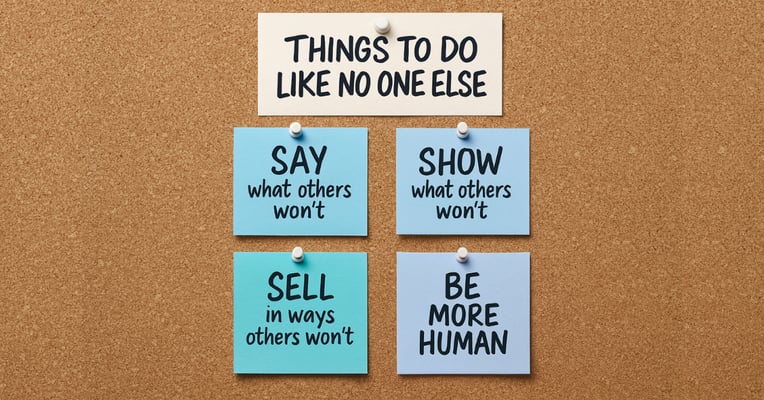
You care about your buyers. That’s why “safe” should bother you.
Safe content protects the company from discomfort but pushes risk onto the customer: confusion, poor choices, wasted time and money.
And you know what? Customers are tired of it.
They don't know who to trust, marketing content feels empty, and nobody's really paying attention anymore.
But the good news is that you can do something different!
You can become the company that people actually trust and want to hear from. Not by being louder than everyone else, but by being more honest and helpful to your customers. That's what disruptive content is all about: creating useful, truthful information that puts your buyers first and actually earns their trust.
Here at IMPACT, we believe something important: the businesses that will really succeed are the brave ones who are willing to change how they talk to their customers.
So let's talk about what it really means to create content that shakes up your industry. We'll walk you through some practical steps and new ways of thinking that will help your business stand out.
What Do We Mean by "Disruptive Content"?
Disruption starts when you're willing to do what others in your industry won't do. It means being open when others are secretive, and making it easier for customers to make smart choices. It's about becoming the voice people trust most in your market.
Instead of creating boring, self-serving marketing that plays it safe, disruptive content takes a stand.
In order to create this type of content, you need to understand what your buyers are worried about, what questions keep them up at night, and then be brave enough to give them exactly what they need, even when it’s uncomfortable.
4 Ways to Disrupt Your Industry
To create content that really disrupts your industry and builds trust, you need to think differently than your competitors. The Endless Customers System™ gives us the 4 Pillars of a Known and Trusted Brand:
- Say what others in your space aren’t willing to say
- Show what others in your space aren’t willing to show
- Sell in a way others in your space aren’t willing to sell
- Be more human than others in your space are willing to be
In this article, we’ll explore them as the building blocks of industry disruption. Let's break each of these down for you.
Say What Others in Your Space Aren’t Willing to Say
The first step is simple but scary - talk about the stuff your competitors avoid. These are usually the big questions buyers have but can't find honest answers to anywhere.
The Endless Customers System™ calls these important topics The Big 5:
- Cost & Price: Everyone wants to know what they can expect to pay. They also want to understand what constitutes “value.” Such behavior is universal amongst all buyers.
- Problems: A desire to buy something is often accompanied by fears and worries. What are the drawbacks? How could this purchase go wrong?
- Versus & Comparisons: As humans, we love to compare. It’s how we make informed decisions, stacking one option against another to find the best solution for our needs.
- Reviews: Buyers want the good, the bad, and the ugly. And, importantly, they want to know who a product or service is and is not a good fit for.
- Best in Class: Everyone searches for the “best,” “most,” “top,” or whatever extreme they can find. Even if they don’t end up choosing the top-rated option, they want to clearly understand all the possibilities available to them.

When you embrace The Big 5, you give people the information they really need. This builds huge amounts of trust and turns your content into a powerful tool for getting leads and making sales.
Show What Others in Your Space Aren’t Willing to Show
In today's visual world, just talking about your value isn't enough. You need to show it. Video builds trust by letting customers see proof of your claims and feel more connected to your brand.
We’ve identified what we call The Selling 7 - seven types of videos that help with sales and marketing:
- Cost and Pricing Videos that clarify how pricing works
- 80% Videos that answer frequently asked questions about a product or service
- Product/Service Videos that describe your product or service and establish who is/is not a good fit for them
- Landing Page Videos that increase conversion rates by setting expectations and communicating the value
- Customer Journey Videos that show how products and services have been successful for others in the real world, thereby establishing social proof
- Bio Videos that introduce your team and establish trust faster with a prospect
- Claims We Make Videos that prove what you say about who you are and what you sell are true by showing it.
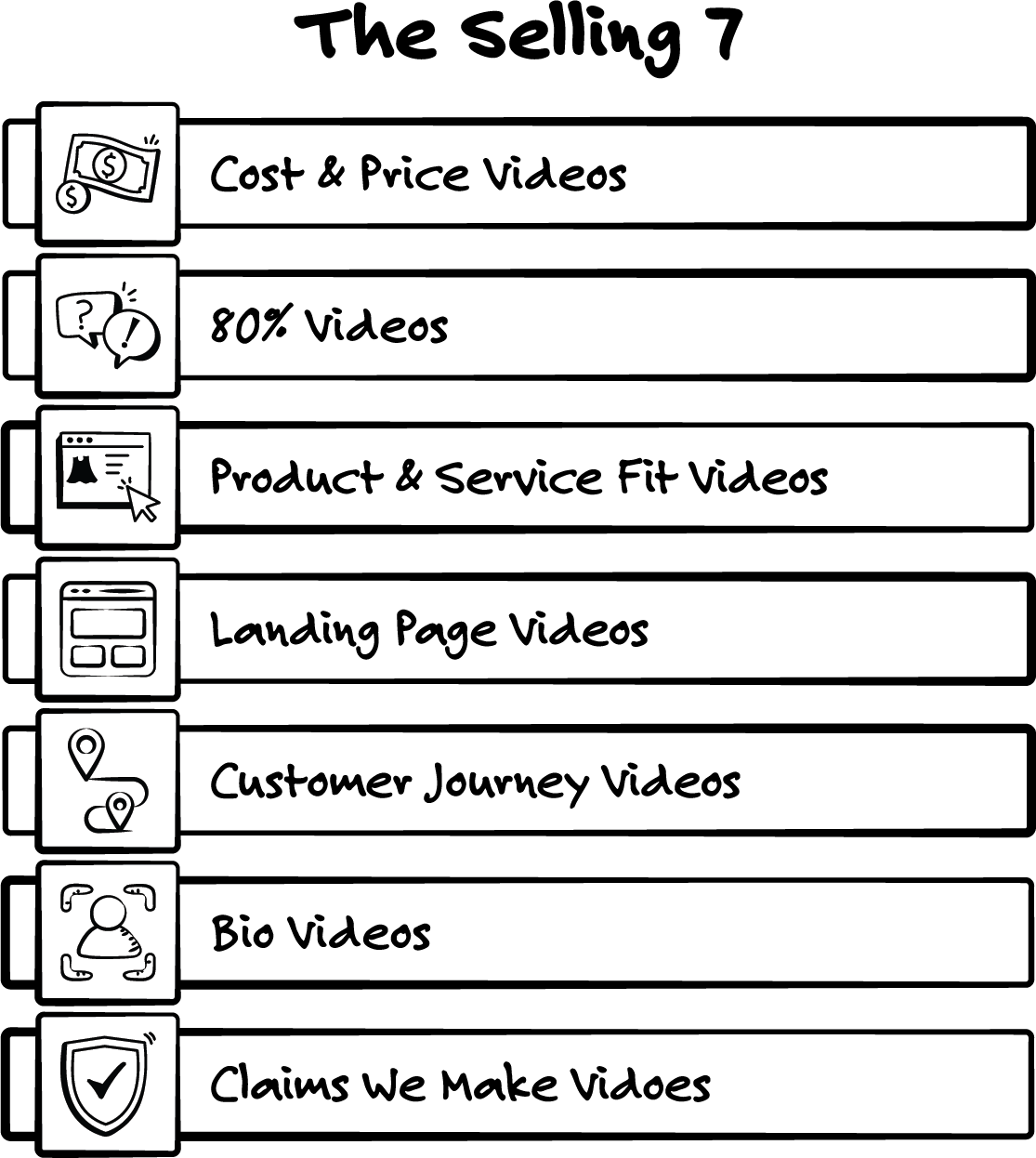
An example of showing what others won’t comes from Opes Partners, a property investment company in New Zealand. They created a YouTube show called "The Deal" where they openly questioned potential suppliers to show investors how they qualify the suppliers they work with. This transparency not only entertained viewers but also built solid trust by showing their "secret process" to everyone.
Sell in Ways Others in Your Space Aren’t Willing to Sell
Content can be any experience that helps a buyer learn and decide. That includes self-service tools when they answer real questions without a meeting.
Buyers research in private. They want clear expectations and the ability to move at their own pace. Interactive experiences keep them with you because they teach in the moment and reduce friction.
Marcus Sheridan once challenged boat company CEOs to add "build-and-price" tools to their websites. Sportsman Boats did it and completely changed the market, forcing competitors to copy them. This showed that rule-breakers eventually become the ones making the rules.
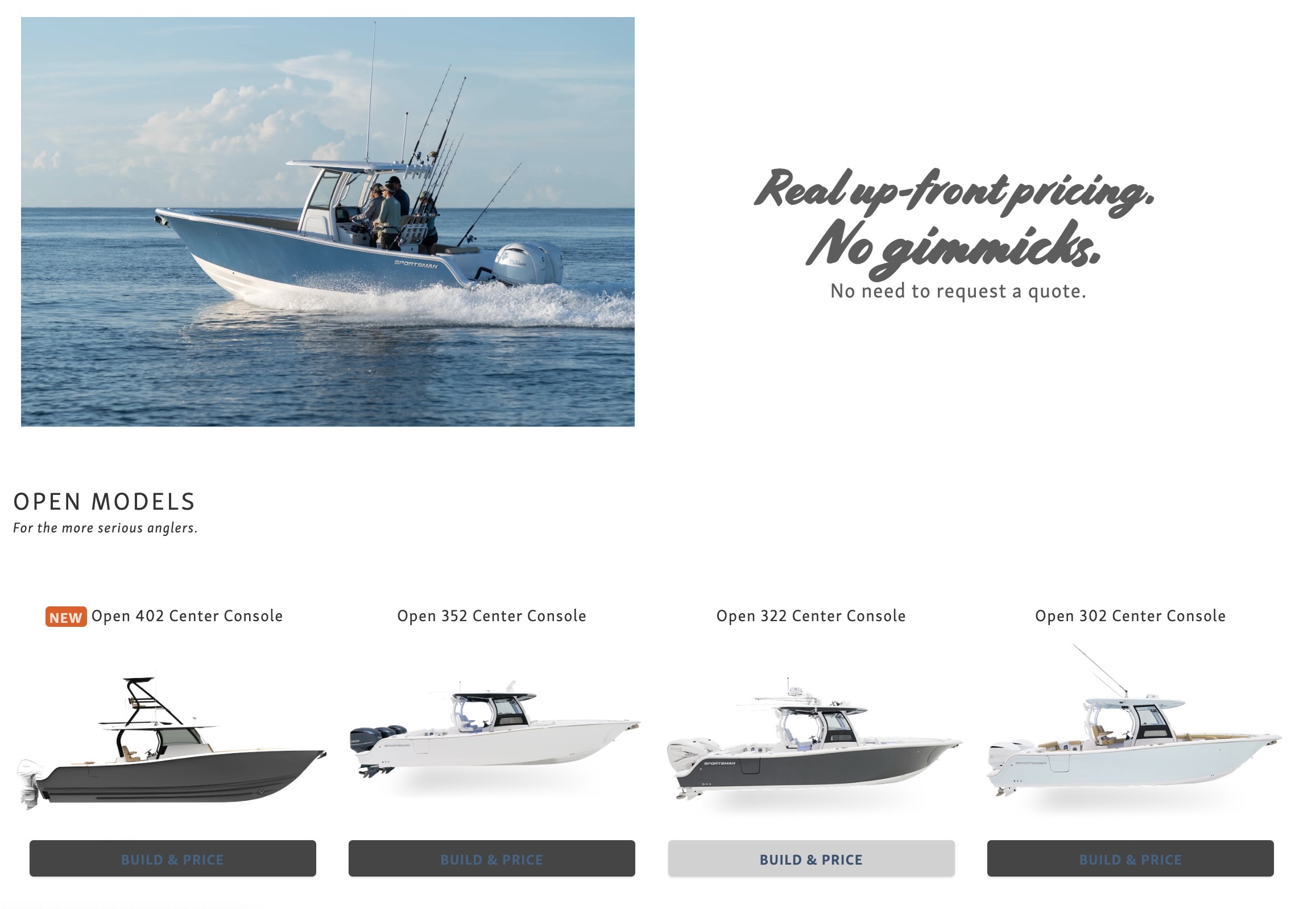
There are five main self-service tools you should be considering, and they are:
- Self-Assessment: These tools, like quizzes or scorecards, allow buyers to assess their needs and challenges. They provide personalized insights and recommendations, empowering prospects with clear next steps before ever speaking to your sales team.
- Self-Selection: Help overwhelmed buyers find exactly what they need. These interactive tools ask targeted questions to guide prospects to their ideal solution, building trust through personalized recommendations rather than overwhelming them with options.
- Self-Configurator: Buyers want to visualize how a product or service will fit into their world. These tools allow them to personalize and configure options, turning abstract possibilities into concrete plans and deepening their investment in the outcome.
- Self-Scheduling: By removing the back-and-forth of scheduling, these tools give buyers control over setting appointments or demos. They streamline the process, create a frictionless experience, and even allow prospects to choose the team member they want to meet.
- Self-Pricing: The most important on the list, pricing calculators and estimators give buyers the transparency they crave. By providing ranges or estimates, these tools set clear expectations and reduce friction, establishing trust and moving buyers closer to a purchase decision.
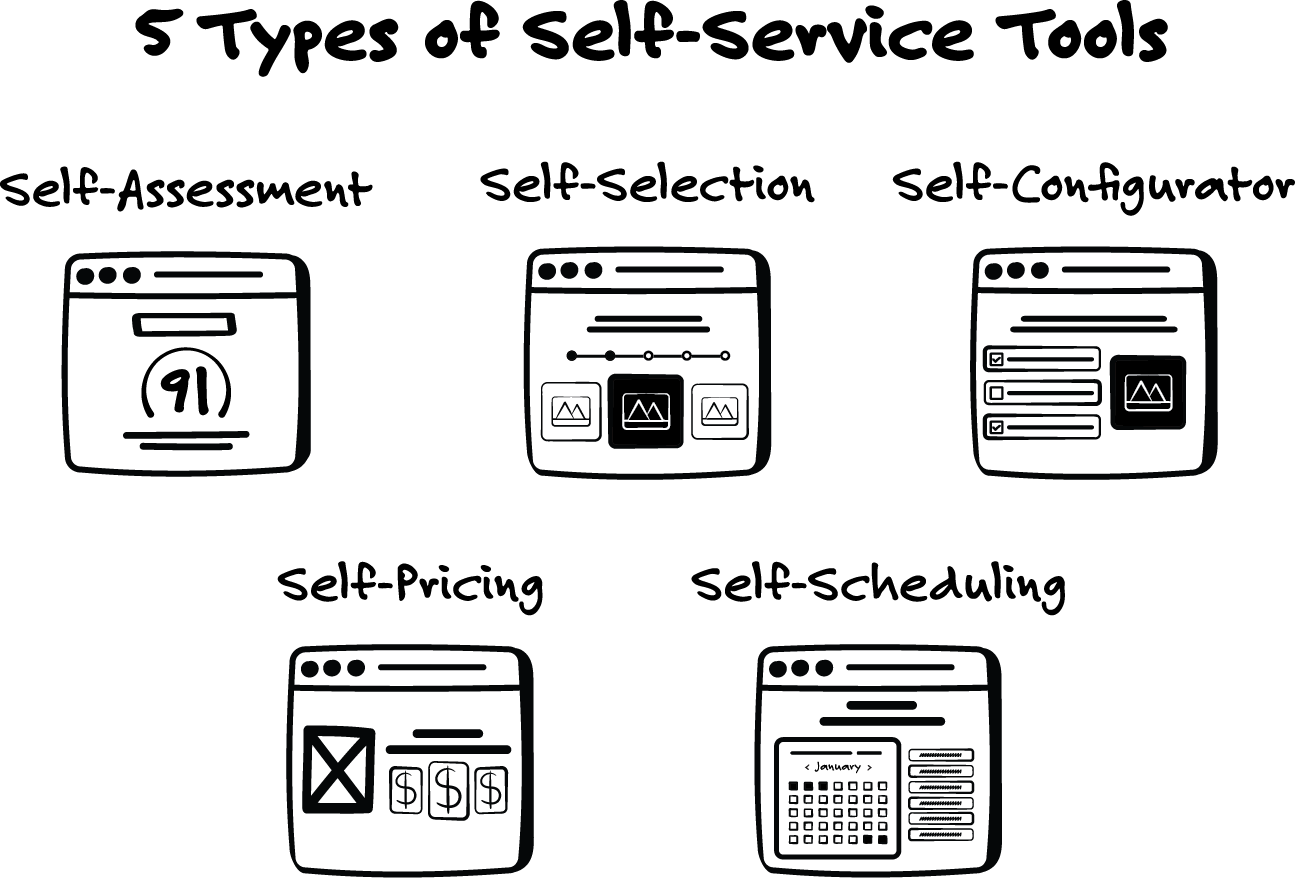
By using these tools, you give buyers power and make the sales process smoother. This leads to more sales and happier customers.
Be More Human Than Others in Your Space Are Willing to Be
In a world full of automation, keeping the human touch is more important than ever. People buy from people they trust, and trust comes from connection, personality, and being real.
Generic, computer-generated content often lacks the unique voice, first-hand stories, and real emotions that show there's an actual person behind the brand.
Here are 15 ways you can humanize your brand in ways few others are willing to do:
- Tell Real Stories: Share personal stories from employees, founders, or customers that highlight real experiences and challenges.
- Showcase Employee Spotlights: Highlight the diverse talents and backgrounds of employees across your company on social media or your website.
- Respond Authentically on Social Media: Move away from robotic responses and use authentic, personalized replies to engage with your audience, something most brands don’t do. Even better, make the response from the CEO.
- Create a ‘Day in the Life’ Series: Develop content that shows a typical day for an employee, giving a relatable, human view of your team.
- Share Failures and Lessons Learned: Don’t just highlight wins. Show setbacks and the journey to overcome them to build trust and relatability.
- Feature Customer Stories: Showcase testimonials and real stories from customers, ideally with photos or video, to demonstrate the impact of your product or service.
- Use Real Photos, Not Just Stock Images: Show genuine photos of your team, customers, and behind-the-scenes moments to add authenticity.
- Highlight Social Responsibility Efforts: Share your company’s charitable activities, volunteer, or community initiatives with an emphasis on the people involved.
- Create a Brand Voice That’s Relatable: Develop a conversational and down-to-earth brand voice that aligns with how your customers speak.
- Be Transparent About Processes: Offer insights into how products are made or services are delivered, showing the people and decisions involved.
- Offer Behind-the-Scenes Content: Let audiences see what happens behind closed doors, whether it’s product development, brainstorming sessions, or company outings.
- Promote Real-Time Customer Support Interactions: Showcase stories of customer support experiences where the team went above and beyond, adding a face and name to the interaction.
- Use Humor Appropriately: Show that your brand doesn’t take itself too seriously by sharing light, funny content when appropriate.
- Have a Strong Leader Presence: Encourage executives or founders to have an active, personal presence on platforms like LinkedIn, X, and TikTok.
- Create a Podcast: Start a podcast where team members discuss industry trends, personal experiences, or company culture.
Now, you may look at this list and say, “There’s no way we could do all of that.”
At first, probably not. But over time, absolutely. Start where you feel most comfortable and go from there.
Getting Past the Fear of Being Different
We get it. Trying these disruptive strategies can be scary.
Many businesses resist because of deep fears, like "Ostrich Marketing" (where companies stick their heads in the sand and ignore tough questions). Common worries include competitors getting mad, complaints (internal or external), and being embarrassed if a bold initiative doesn't work.
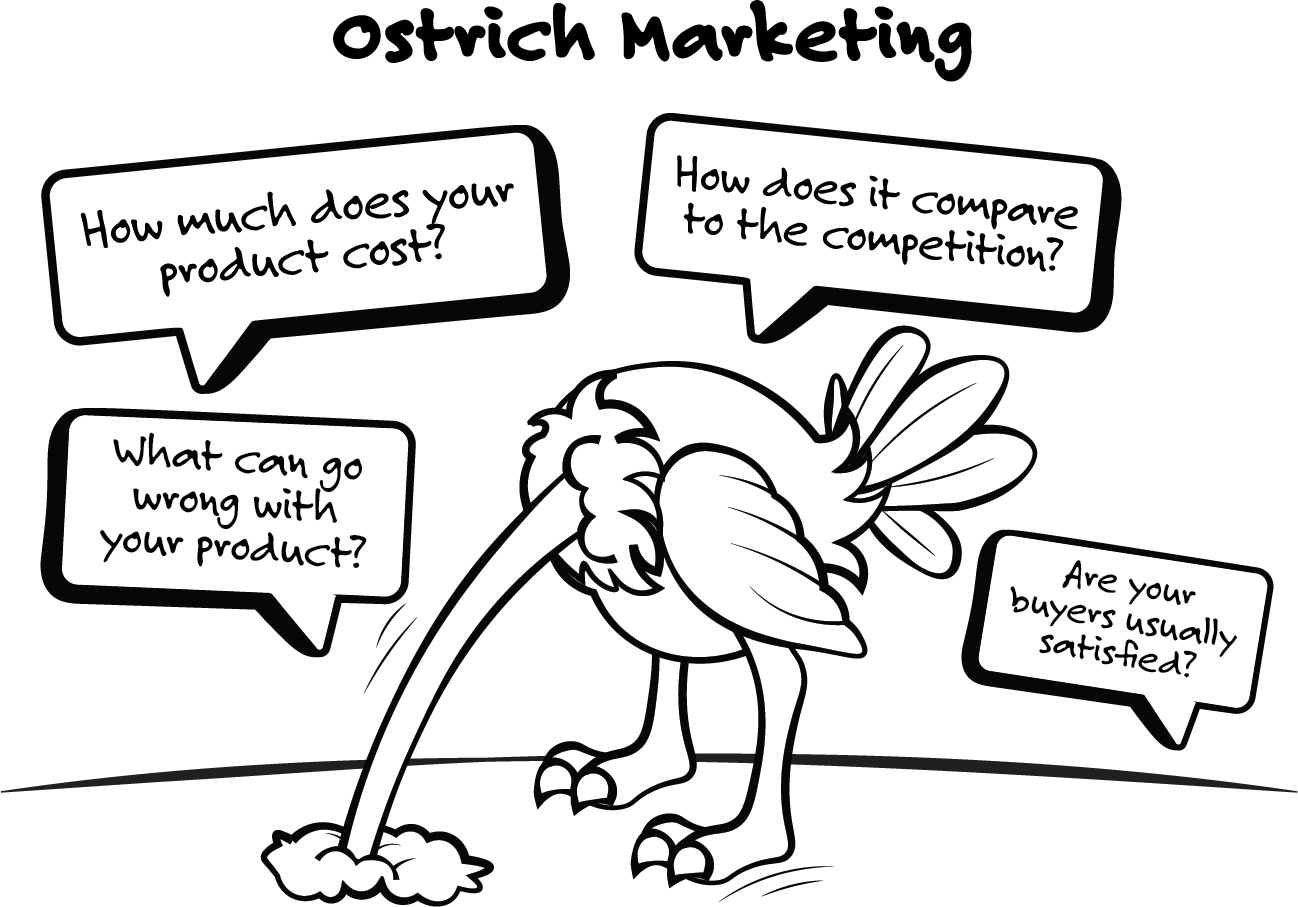
But here's what we've learned: the biggest risk today is doing nothing.
The businesses that will succeed are the brave ones who question the "rules," embrace being open, and put buyers first no matter what. They dare to be different, break the rules, and by doing that, become known, trusted, and absolutely essential to their customers.
Common Questions About Disruptive Content
Let us answer some questions you might have about creating disruptive, trust-building content:
Q: What exactly is "disruptive content"? A: It's useful, honest content that puts buyers first and challenges what everyone else in your industry is doing. It openly addresses customer questions, fears, and concerns to earn trust and set your business apart.
Q: How can our company figure out what "disruptive" topics to cover? A: Start by listening to your sales and customer service teams. They hear customer questions and worries every day. Focus on The Big 5: Cost & Price, Problems, Versus & Comparisons, Reviews, and Best in Class. All buyers research these things.
Q: Do we really need to mention competitors in our content? A: Yes! Comparing your products/services to competitors in an unbiased way builds major trust and helps buyers make smart decisions. It shows you're an authority in your field.
Q: Is it really necessary to show prices online? A: Absolutely. Buyers expect to see prices. Hiding them frustrates people and breaks trust. Showing price ranges, explaining what affects cost, and using pricing tools helps buyers and brings you better leads.
Q: How can video make our content more disruptive? A: Video lets you show what others just talk about, making your content more real and engaging. It helps make your brand more human and creates deeper connections with your audience.
Q: What if our industry has lots of rules or is very traditional? Can we still be disruptive? A: Yes! Even in industries with lots of rules, you can answer buyer questions honestly and openly without making wild claims. These ideas work everywhere, you just need to be creative and brave about using them in your specific situation.
Dare to Be Different
Creating content that shakes up your industry takes courage, openness, and always thinking about your buyer first. It means daring to say what others won't, showing what others hide, selling in ways that give customers control, and being more human in every interaction.
Now is the time to build the foundation of trust that will keep your business strong for years.
By following the Endless Customers principles and challenging the way things have always been done, you'll lead the way.
If you're ready to change your approach and become the most known and trusted brand in your market, we encourage you to learn more about Endless Customers, and how bringing it into your business can give you the growth you’ve been wanting.

This article was produced as a collective effort of the IMPACT Team and is regularly updated.
How to Create Content That Will Disrupt Your Industry
Share
NEED HELP WITH CONTENT MARKETING?
If you’re looking to take control of your sales and marketing using content as a key driver, IMPACT can help. We can guide you on how to build your internal team, stop relying on agencies, and become the most known and trusted brand in your market.
NEED HELP WITH CONTENT MARKETING?
If you’re looking to take control of your sales and marketing using content as a key driver, IMPACT can help. We can guide you on how to build your internal team, stop relying on agencies, and become the most known and trusted brand in your market.